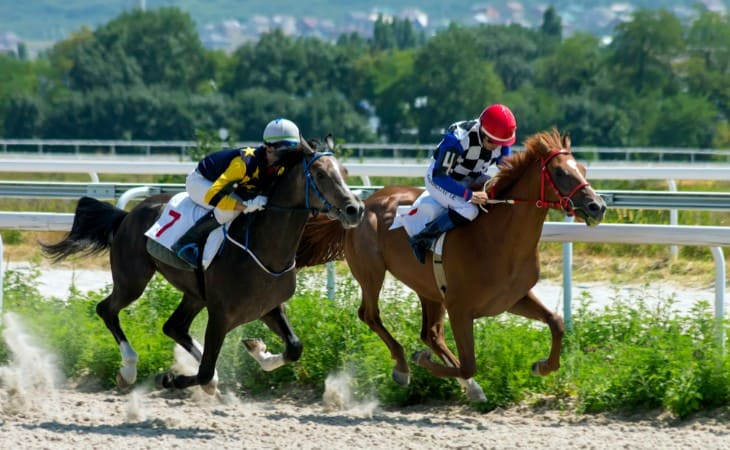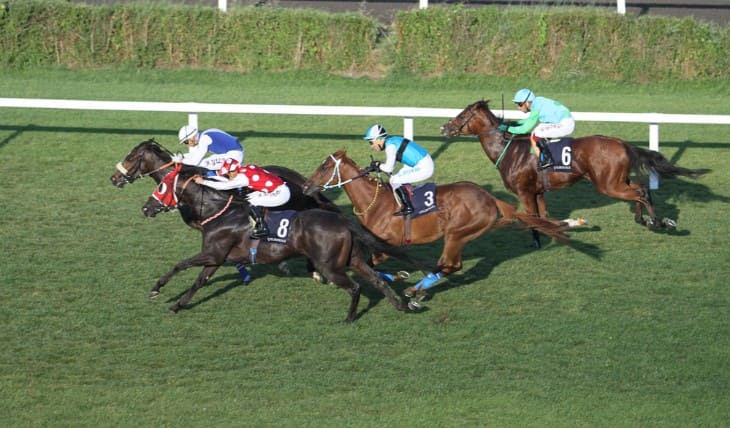- Unveiling the Tradition of Tipping
- Etiquette and Custom in British Horse Racing
- The Tipping Jargon: A Beginner's Guide
- The Masters of Tipping: Renowned Pundits
- Factors Influencing Tipping Choices
- Decoding the Tipping Process: From Form Analysis to Insider Insights
- The Digital Age: Tipping Websites and Social Media Influences
- Tipping with Precision: Statistical Models and Algorithms
- The Psychology of Following Tipping Advice
- Conclusion: Navigating the Tipping Terrain in Horse Racing
Horse racing is an integral part of British culture, encompassing more than just the races themselves. It involves a set of traditions, etiquettes, and the significant practice of tipping. Whether an experienced bettor or a beginner, comprehending the nuances of tipping is vital in this sport. This article will provide insights into the practice of tipping in British horse racing.
Unveiling the Tradition of Tipping
When you step into the world of British horse racing, you're stepping into a world steeped in tradition. Tipping, a practice as old as the sport itself, involves sharing predictions and recommendations about which horses are likely to win, place, or show in upcoming races. It's more than just a casual exchange of opinions; it's a way of honouring the sport's history and expertise while engaging with fellow enthusiasts.
In this tradition, those who are skilled at predicting race outcomes are known as "tipsters". These tipsters possess an in-depth understanding of the sport, its participants, and the numerous factors that can influence a race's outcome. Over the years, tipsters have emerged as respected figures within the horse racing community, their insights and advice often sought after by punters seeking to increase their odds of a successful bet.
Etiquette and Custom in British Horse Racing
Tipping in horse racing isn't just about providing advice—it's about doing so with grace, respect, and a sense of camaraderie. Etiquette plays a significant role in the tipping landscape, reflecting the sport's long-standing customs.
When it comes to sharing tips, conversations can range from casual chats among friends to more formal interactions within dedicated horse racing circles. It's not uncommon to see punters huddled together before a race, engaged in animated discussions about which horse is likely to emerge victorious. Respect for differing opinions is key; horse racing, like any sport, is filled with unpredictable outcomes, and the camaraderie among punters is often built on a mutual understanding that not every tip will pan out.
In more formal settings, tipsters gain recognition through their consistent accuracy and knowledge. Renowned pundits earn their reputations through years of experience and study, allowing them to become trusted sources of advice for those looking to make informed bets. Recognising and appreciating the expertise of these tipsters is a part of the horse racing etiquette that keeps the tradition alive.
The Tipping Jargon: A Beginner's Guide
Now that we've uncovered the essence of tipping and its role in the world of horse racing, it's time to tackle the jargon that's often thrown around in these circles. If you're new to the sport, terms like "nap," "each-way," and "accumulator" might sound like a foreign language. But fear not, for we're here to guide you through the maze of tipping terminology.
Let's start with the "nap." No, we're not talking about taking a midday snooze. In horse racing parlance, the "nap" is the tip that a tipster considers their strongest selection of the day. It's the horse they believe has the best chance of crossing the finish line first. So, when you hear someone say, "My nap for today is in the fifth race," they're basically revealing their most confident prediction.
Moving on to the "each-way" bet—a term that often raises eyebrows among newcomers. An each-way bet is essentially two bets in one: one bet on the horse to win and another on the horse to finish in one of the top places (usually second or third, depending on the number of runners). It's a way to increase your chances of winning, even if your chosen horse doesn't clinch first place. Each-way bets are particularly popular in races with larger fields, where the competition is fierce and the outcome less predictable.
And then there's the "accumulator," which adds an element of excitement and complexity to your betting strategy. An accumulator, often referred to as an "acca," involves selecting multiple horses to win their respective races. The catch is that all your chosen horses must win for you to claim the winnings. While accumulators offer enticing payouts, they also come with higher risks due to the need for every horse to perform as expected. It's a thrilling ride, but one that requires careful consideration and a dash of luck.

The Masters of Tipping: Renowned Pundits
As we journey further into the realm of tipping, it's essential to acknowledge the experts who shape this landscape—the tipsters whose insights and analyses guide punters' decisions. These tipsters, often referred to as pundits, are individuals who have honed their craft through years of experience, meticulous research, and an unwavering passion for horse racing.
Pundits come in various forms, from those who write for prestigious racing publications to those who share their tips on social media platforms and specialised websites. What sets these pundits apart is their ability to dissect a race, consider numerous variables, and offer predictions that are more than just educated guesses. They study the form of horses, analyse jockeys' records, evaluate track conditions, and keep a keen eye on any factors that could influence a race's outcome.
As a punter, following the advice of renowned pundits can offer a valuable edge. Their in-depth knowledge of the sport and its intricacies can provide you with insights you might not have considered otherwise. However, it's essential to remember that even the most experienced pundits can't guarantee a winning prediction every time. Horse racing, after all, is a dynamic and unpredictable sport, and outcomes can often defy even the most well-informed expectations.
Factors Influencing Tipping Choices
In the intricate world of tipping, there's more than meets the eye when it comes to making accurate predictions. Successful tipsters don't just rely on gut feelings or random selections. Instead, their insights are built on a foundation of careful consideration of numerous factors that can influence a race's outcome.
One of the most crucial factors is the form of the horses. A horse's recent performance in previous races is a key indicator of its current fitness and capabilities. Tipsters meticulously study past races, looking for patterns and improvements, and considering how well a horse has adapted to various track conditions. This information can reveal which horses are in top form and likely to excel in the upcoming race.
Jockeys play a significant role in a horse's performance, so their track record is another aspect that tipsters assess. Experienced jockeys with a history of success can often make a difference in tight races, using their knowledge of the track and their horses to their advantage. The synergy between horse and jockey is a critical element in horse racing, and tipsters pay close attention to this dynamic.
Track conditions, weather, and even the draw—the allocation of starting positions—are additional factors that can significantly impact a race. Certain horses perform better on specific track surfaces, while weather conditions like rain or strong winds can alter a horse's performance. The draw can also affect a horse's chances, as some positions are more favourable than others due to track layout and conditions.
Formulating a successful tipping strategy involves weighing all these variables and more. It's not just about picking the favourite or the horse with the flashiest name; it's about evaluating the intricate web of factors that come together to create a race's outcome. As you delve deeper into the world of horse racing, you'll come to appreciate the depth of analysis that goes into each tip offered by seasoned pundits.
Decoding the Tipping Process: From Form Analysis to Insider Insights
Have you ever wondered what goes on behind the scenes when a tipster offers their prediction? It's not a mere guess or a toss of the coin—it's a meticulous process that involves analysis, research, and a deep understanding of the sport. Let's take a peek into the world of a tipster and how they arrive at their predictions.
Form analysis is at the heart of a tipster's work. This process involves poring over a horse's recent races, noting factors like finishing positions, margin of victory, and the quality of competition. By dissecting this data, tipsters can identify horses that are consistently performing well and those that might be on an upward trajectory. They also take into account any variations in performance due to changes in distance, track conditions, or jockey assignments.
Insider insights play a crucial role in tipping accuracy as well. Tipsters often have connections within the horse racing industry—trainers, jockeys, stable staff—who can provide valuable information that might not be readily available to the general public. This insider knowledge can range from insights about a horse's recent training routines to tidbits about its temperament and condition.
Putting all this information together, tipsters formulate their predictions. They consider how the various factors align and interact, crafting a well-rounded perspective on which horse has the best chance of victory. It's this blend of research, analysis, and insider insights that separates a tipster's prediction from a random guess.
The Digital Age: Tipping Websites and Social Media Influences
In the modern era, the world of horse racing tips has expanded beyond traditional forums and publications. The digital age has ushered in a new era of accessibility, with a plethora of websites, social media accounts, and online platforms dedicated to sharing tipping advice. These digital spaces have revolutionised the way punters access and engage with tips, opening up a world of possibilities and challenges.
Tipping websites have become a virtual hub for enthusiasts seeking advice. These platforms are home to a diverse range of tipsters, each offering their insights, predictions, and analyses. From free tips to premium subscriptions, punters can choose from a variety of options based on their preferences and level of engagement. Tipping websites often showcase tipsters' track records and success rates, allowing punters to make informed decisions about whose advice to follow.
Social media, too, plays a significant role in the dissemination of tipping information. Twitter, in particular, has become a hotbed of horse racing discussions and tip-sharing. Renowned tipsters and punters alike take to the platform to share their predictions, engage in debates, and provide real-time updates during races. Hashtags related to horse racing trends can quickly connect punters and tipsters from all corners of the globe, fostering a sense of community within the virtual realm.
However, the digital age's rise isn't without its challenges. The sheer volume of information available online can be overwhelming, and not all sources are created equal. Distinguishing between well-researched tips and baseless opinions requires a discerning eye. Moreover, the allure of quick success can lead some punters to fall prey to scams or misleading advice. Navigating this digital landscape requires a blend of cautiousness, critical thinking, and an appreciation for the expertise that credible tipsters bring to the table.
Tipping with Precision: Statistical Models and Algorithms
As the world of horse racing tips evolves, so too does the technology used to refine the art of tipping. The digital era has given rise to the use of statistical models and algorithms, adding a new layer of precision to the prediction process. These tools aim to remove the guesswork from tipping by analysing vast amounts of data and identifying patterns that might elude the human eye.
Statistical models take into account a wide range of variables, from a horse's recent form and jockey's history to track conditions and even the time of day a race takes place. By crunching these numbers, these models generate probabilities for each horse's performance, helping tipsters identify horses that might be flying under the radar of traditional analysis.
Algorithms, on the other hand, can process and analyse data at speeds that humans could never match. They can identify correlations, trends, and anomalies that might not be apparent through manual analysis alone. This data-driven approach to tipping is gaining traction, with punters and tipsters alike harnessing the power of technology to refine their strategies.
However, while statistical models and algorithms offer promise, they're not foolproof. Horse racing is a complex and unpredictable sport, often defying logical expectations. These tools might increase the precision of predictions, but they can't account for every intangible factor that contributes to a race's outcome. The human touch of experienced tipsters, with their ability to interpret nuanced information and insider insights, remains an integral part of the tipping landscape.
The Psychology of Following Tipping Advice
In the world of horse racing, the art of tipping goes beyond analysing data and making predictions—it delves into the realm of human psychology. Punters are not just influenced by statistics and expert opinions; their own emotions, biases, and psychological tendencies play a significant role in how they approach tipping advice.
Confirmation bias is one of the psychological phenomena that can impact how punters interpret and follow tipping advice. This bias leads individuals to seek out information that confirms their pre-existing beliefs while dismissing or ignoring information that contradicts those beliefs. For example, if a punter strongly believes that a particular horse will win, they might be more inclined to focus on tips that support their belief while disregarding those that suggest otherwise.
Another factor that comes into play is the fear of missing out (FOMO). In the fast-paced world of horse racing, punters often feel compelled to follow tips, especially if they see others talking about a particular horse or race. The fear of missing out on a potential winner can lead punters to hastily place bets based on tips that might not align with their usual strategies or analysis.
Furthermore, the psychology of loss aversion can influence how punters respond to losses and wins. Loss aversion refers to the tendency to feel losses more intensely than gains of the same magnitude. Punters might hold on to a losing bet for longer than they should, hoping for a turnaround, while cashing out a winning bet quickly to secure their gains. This psychological bias can impact decision-making and contribute to both success and failure in the world of betting.
Understanding these psychological nuances is essential for punters who want to make the most of tipping advice. Being aware of biases and tendencies can help punters make more rational decisions, stick to their strategies, and navigate the emotional rollercoaster that comes with horse racing betting.

Conclusion: Navigating the Tipping Terrain in Horse Racing
Tipping in horse racing is not just about placing bets—it's a journey that combines knowledge, analysis, and an appreciation for the ebb and flow of the races. It's about embracing the excitement and uncertainty of the sport while making informed decisions based on the insights provided by tipsters. From the thrill of seeing your chosen horse cross the finish line first to the camaraderie of discussing tips with fellow enthusiasts, the world of tipping adds depth to the horse racing experience.
As you begin your own journey through the tipping terrain, remember that success in horse racing betting is never guaranteed. It's a complex puzzle where even the most skilled tipsters can't foresee every outcome. The key is to approach tipping with a blend of curiosity, critical thinking, and an understanding of the factors that influence race results.








